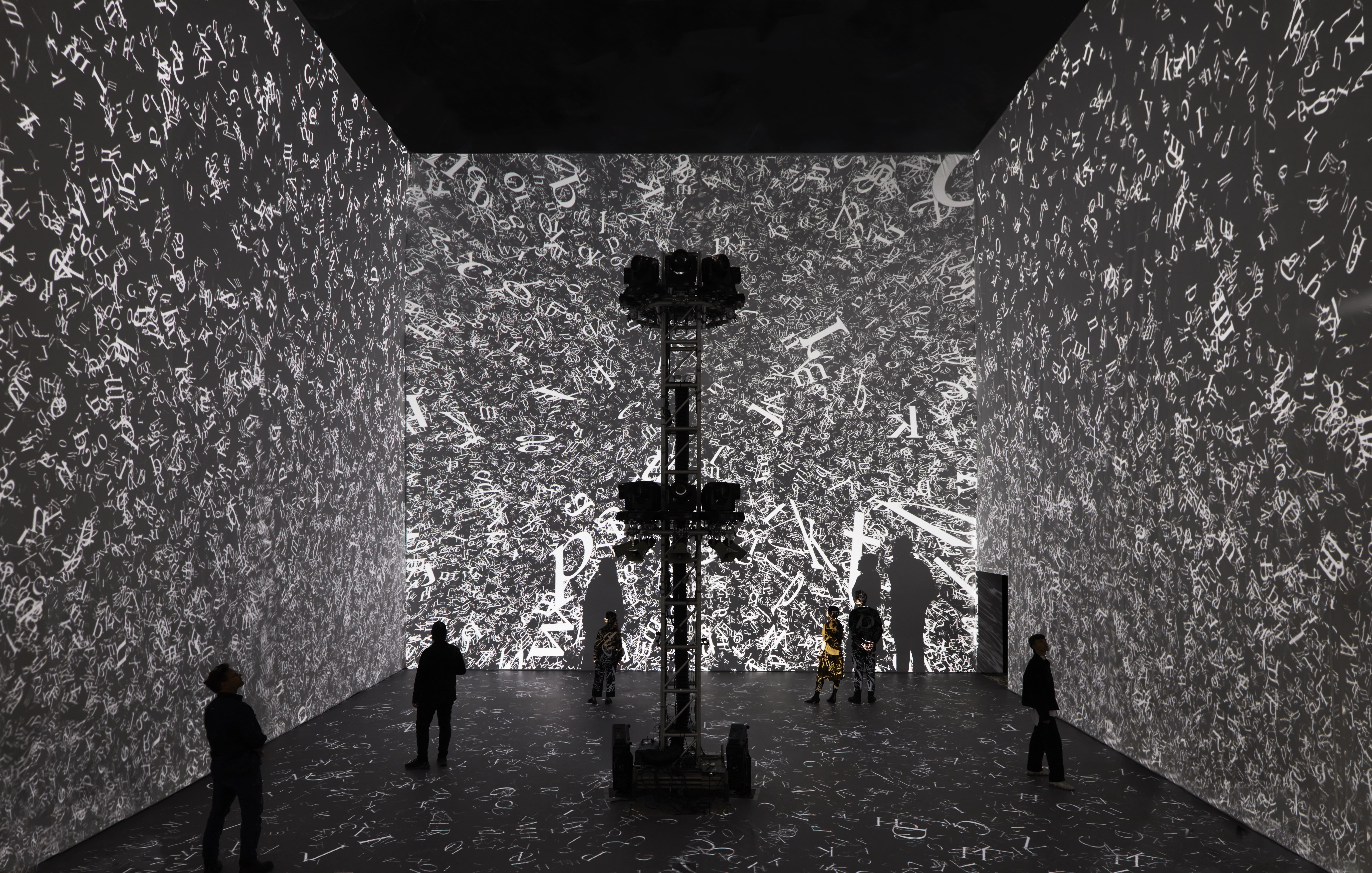There are times when even in the loneliest of circumstances, we feel like we are not truly alone. This feeling is weaved into rhetoric — when we pass our deepest condolences and say “so and so is watching over you” or, more ominously, “I feel like I’m being watched.” In these moments, the atmosphere feels heavy with presence. It is this very concept that artist Rafael Lozano-Hemmer’s exhibition Atmospheric Memory calls us to consider.
Headlining the Sydney Science Festival, Atmospheric Memory at Ultimo’s Powerhouse Museum navigates the confusing intersection between art and science through a clear, interactive, and multisensory exhibition. Visitors begin in a darkened room that casts a spotlight on scientist Charles Babbage’s inventory, most notably his “Difference Engine No 1”. This retro-futuristic machine foreshadowing the modern computer imagines that every utterance, voice, memory, and movement produced in the atmosphere can be rewound through the calculation of atmospheric molecules. In theory, this would mean that we could revisit fleeting moments from the past, hear the voice of long-lost loved ones at whim, and listen to the dreams and prayers that shaped modernity as we know it. Loranzo-Hemmer’s early tribute to Babbage reveals how his artistic vision was largely inspired by the late scientist’s theory.
From there, visitors move from exhibit to exhibit, some displaying art in darkened rooms, some in clinical brightness, and others in flashing bouts of light produced by hundreds of motion-censored beams strung from the ceiling. One room houses small booths with screens and webcams that trace the mouths of visitors to transcribe speech to text in real time. It is both familiar and foreign. On the one hand, it’s akin to experimenting with ChatGPT, or asking Google Home to perform absurd requests like play a song that we cannot for the life of us remember the name of. On the other hand, it’s shocking to see your own mouth reflected on a screen. It feels like a breach of privacy, a little uncomfortable to see parts of yourself dissected and zoomed into so closely. Another room solidifies this feeling of discomfort. Pinned on the back wall is late accordionist Pauline Olivero’s last breath pumped repeatedly between a bellow and a brown paper bag. Something about the constant circulation of stale breath years after the breather has died raises questions about what we want preserved within our atmosphere, and what we should let go of.
A clear standout for me is the “projection chamber”. In this lofty room, a cloud display machine ejects smoke from tiny frames to spell out words. You whisper into the microphone so as not to disturb other visitors and watch as your whisperings are made public before you. Words are completely uncensored, and at the mercy of the visitors to refrain from saying something stupid or offensive (thank goodness the words are made of smoke and evaporate after a few seconds). The whole room is a cacophony of ephemeral sound and videos displaying faces, voices, and large bodies of texts that disappear once shadows of visitors touch them. But behind the beauty and nuance there is a deeply disturbing truth. After a while the gigantic screens begin to project CCTV footage of random visitors, zooming in on them until they fill the entire screen. It feels attacking, dystopian, Orwellian.
It took me a second to understand how the technology in the room seemed to have so much presence. As visitors move in and out of the room, the technology stays back. When the visitors stand in front of the projected text to disrupt the words, the words eventually form right back into place. The cloud machine continues to generate words even when there isn’t a visitor dictating into the microphone. The cameras piled at the centre of the room constantly record the visitors unbeknownst to them. Even without human interference, the machinery remains sentient. They respond to what is in the atmosphere and produce material that lingers behind in the atmosphere. It begs the question of what the eventual consequence of technology knowing so much can do to us, and to the environment. Who is the recording of memory really benefiting?
As an art exhibition, Atmospheric Memory is cool, edgy, and highly intelligent. As an experience however, it is scary, eye-opening, and prescient. Charles Babbage’s imprint can be felt throughout the exhibit – his theory that the atmosphere is a repository, “a vast library” of everything felt, remembered, and experienced, stands true when we think about our world today. What we want to remember is something we can fully control through the technological tools at our disposal. What then comes of that recording, of that memory, is not always up to us.





